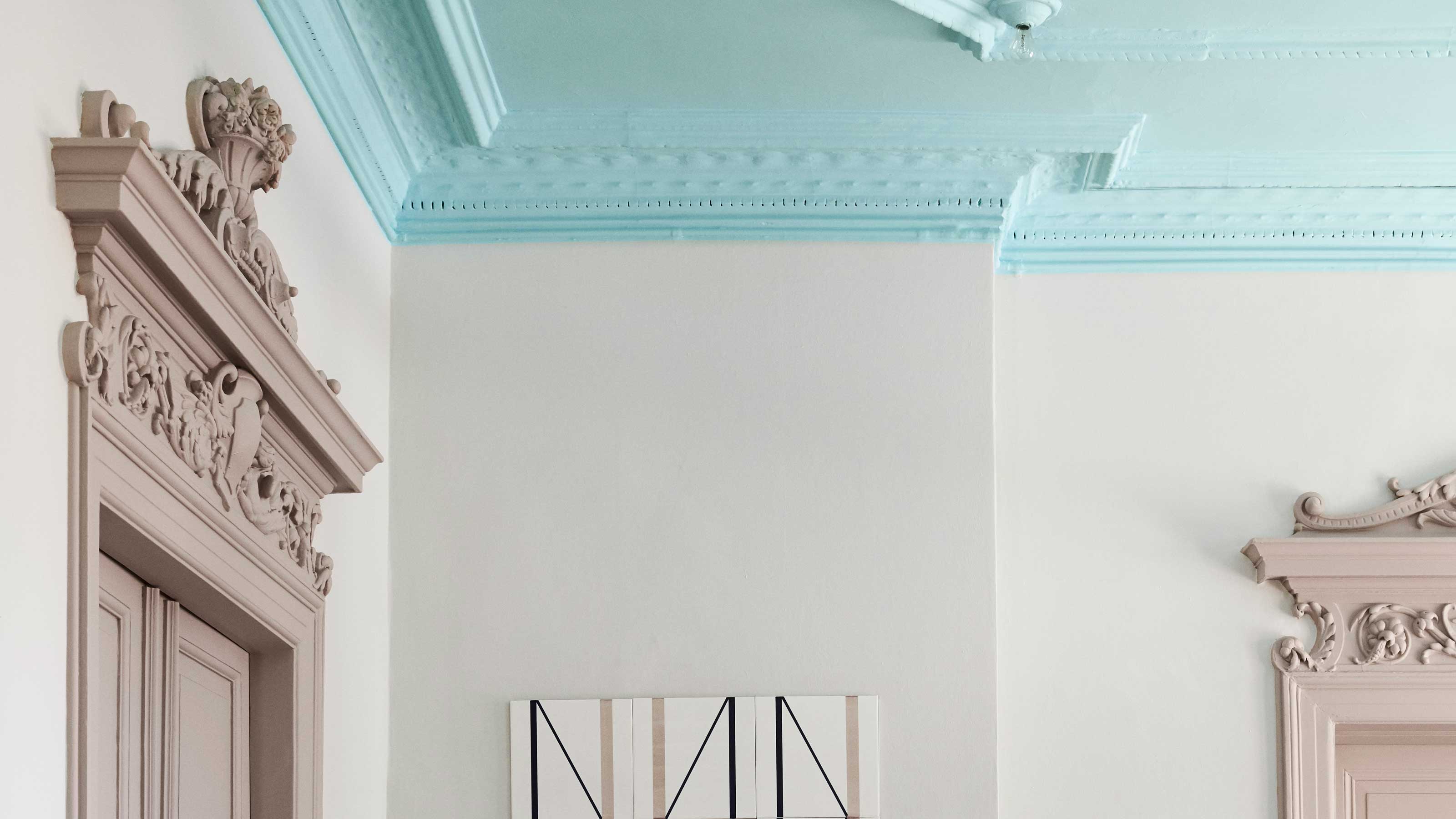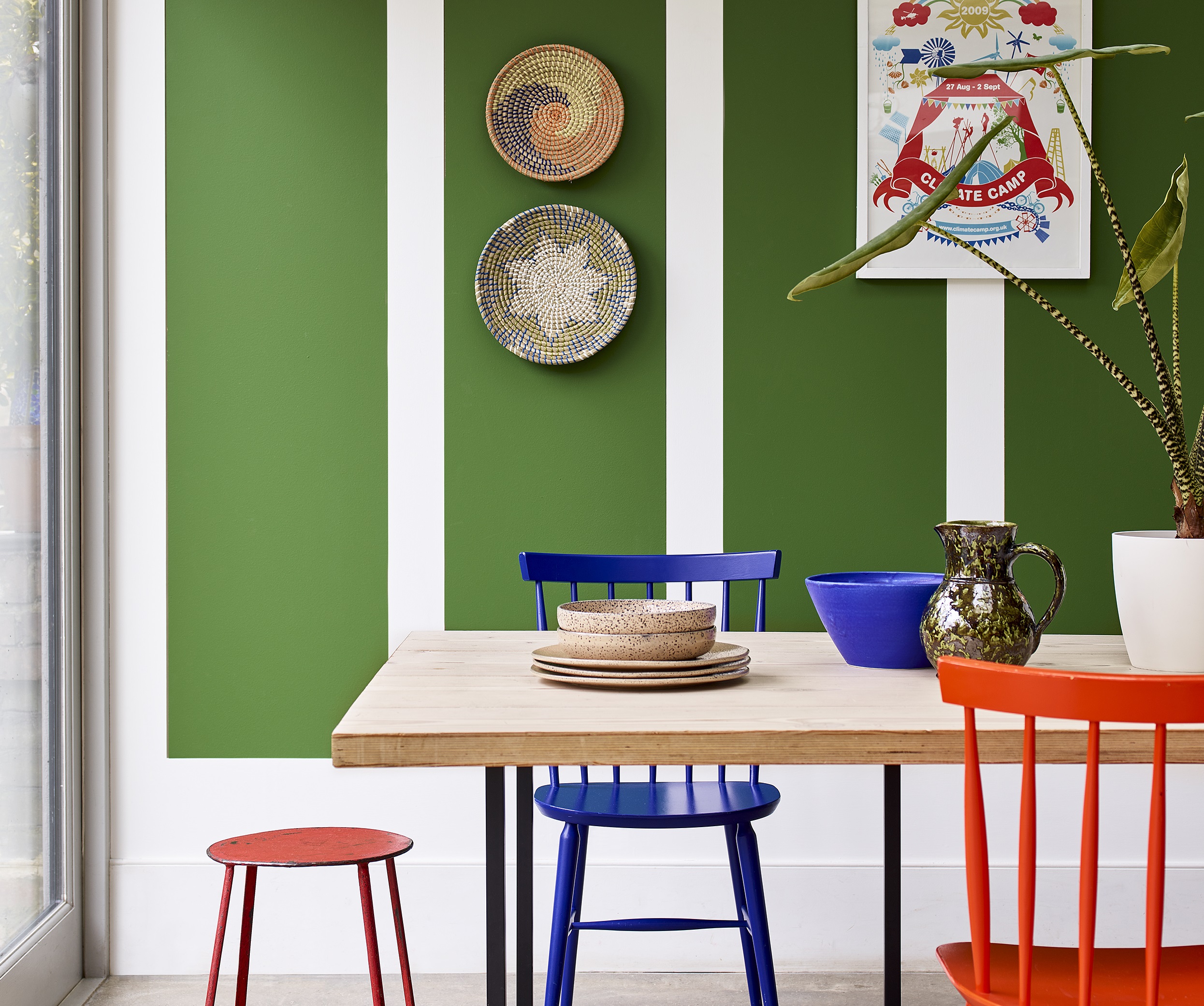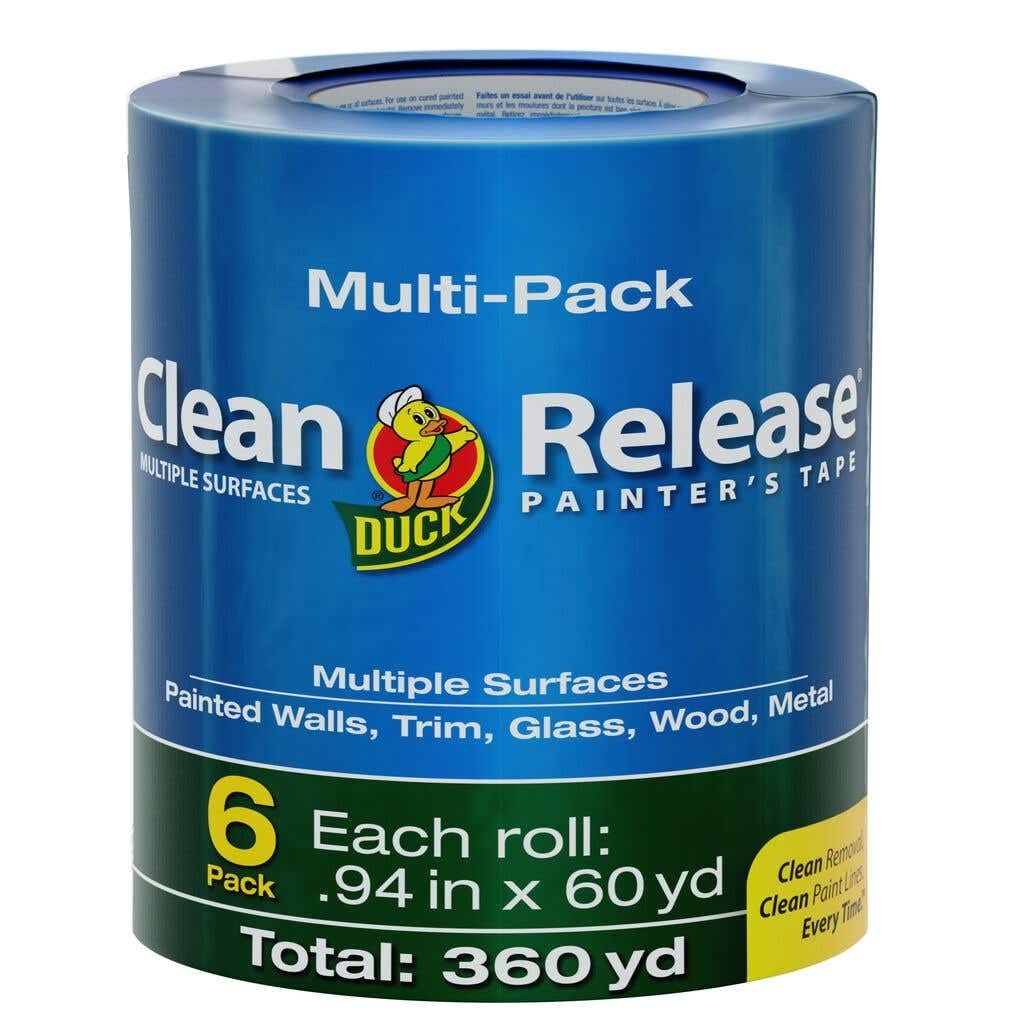Should I be using a paint edger to 'cut in' when decorating? We get the verdict from professional decorators
Cutting in can be a tedious task. Some swear that a paint edger can make the job much easier, but what do the pros use?


There's one particular part of painting that everyone dreads: cutting in. Unless you're a seasoned professional this tedious and time-consuming job will take an enormous amount of effort, and typically you'll need the help of painter's tape, too. If, however, you find tape too much of a fuss, there's another tool out there that could make the task easier for the less steady-handed among us - a paint edger.
As the name suggests, these tools are designed to make edging work easier so you're left with clean lines around your walls. Typically used along baseboards, door and window trim, below crown molding, and at the point where two different colored walls meet, they glide along the edge of your wall's surface applying paint as they go.
Not all professional painters and decorators are fans of paint edgers though, and while they're meant to make it easier to carry out your paint ideas, you'll want to know how to use one properly before you commit taking one to your walls, else they could end up being more of a hindrance. Here's what you need to know.
What is a paint edger?

Put simply, a paint edger is a type of tool that allows you to apply paint along a straight line when painting a wall for a neat and tidy finish. They come in two basic styles, small paint pads or small paint rollers, and they often have small wheels designed to run smoothly along the adjoining surface to keep the paint applicator a small distance away.
'They're used to create a neat, straight line when painting walls,' summarizes David Mason, DIY expert at Knobs.co. 'The roller-style paint edger is essentially a miniature version of a paint roller and is used to create a straight line along edges and corners, while the pad-style edger is a foam or felt pad with a handle, which is used to apply paint along straight edges.'
How do you use a paint edger?
Different paint edgers work slightly differently. With pad-style edgers, a soft material is used to spread paint across the surface. The paint is either fed from a tube or reloaded in a paint tray, as you would a roller. For the most part, they're an effective way to paint a room fast, but they do tend to smear the paint, apply it thickly, and create lines that need feathering out afterward with a brush. There's also the added drawback that you'll need a ladder to reach higher places on your wall.
In most cases, a better option is a roller edger. 'To use one, dip it in a paint tray and roll it along the edge of the wall, making sure to stay as close to the corner or edge as possible,' says David. 'The trick is to move slowly and evenly - this will ensure that no paint gets outside the line. Next, I go back over the line with a slightly damp cloth to smooth out any small imperfections.'
The Livingetc newsletters are your inside source for what’s shaping interiors now - and what’s next. Discover trend forecasts, smart style ideas, and curated shopping inspiration that brings design to life. Subscribe today and stay ahead of the curve.
To finish off a wall, David recommends going in with the pad-style edger after. 'I dip it in paint and then use the handle to press down along the edge of the wall,' he says. 'This helps to create a neat line for a perfect finish.'
Are paint edgers better than painter's tape?

Both painter's tape and paint edgers are designed to make painting straight lines or cutting in easier, but the question is, which is best? 'It’s important to keep in mind that paint edgers take practice and patience to use correctly,' says David. 'Painter’s tape can be easier to use but it doesn't always produce the same level of finish as a paint edger as it can wick. For the best results, I'd recommend a combination of both.'
In the eyes of some professionals, paint edgers are a painting shortcut best avoided completely. Yes, they might make it easier to get a straight-ish line and there's no need to faff around with painter's tape, but they'll never give you the quality finish of a patient and practiced hand.
'I've heard and seen (and fixed) too many horror stories from people trying to do a cutting “quick fix” by buying something other than a brush,' says Tila Lee, owner of Pretty in Paint School. 'There's no reason even a first-time painter can’t use a brush and get a very accurate (and generally better) cut line right off the hop, with the proper techniques.'
To do this Tila suggests an angled paint brush. 'Hold the brush like a pencil, wrapping your thumb around the brush and placing your finger pointing down the narrow side towards the tip,' she says. 'Keep the brush parallel to the line you're cutting. This will keep the paint flowing for the most amount of time through the bristles, and will also give you more control.'
Whether you opt for an edger, painter's tape, or you trust your free hand, no cutting-in job should ever be rushed. For the best results you'll need patience and perseverance, and of course, practice will help too.

Lilith Hudson is a freelance writer and regular contributor to Livingetc. She holds an MA in Magazine Journalism from City, University of London, and has written for various titles including Homes & Gardens, House Beautiful, Advnture, the Saturday Times Magazine, Evening Standard, DJ Mag, Metro, and The Simple Things Magazine.
Prior to going freelance, Lilith was the News and Trends Editor at Livingetc. It was a role that helped her develop a keen eye for spotting all the latest micro-trends, interior hacks, and viral decor must-haves you need in your home. With a constant ear to the ground on the design scene, she's ahead of the curve when it comes to the latest color that's sweeping interiors or the hot new style to decorate our homes.


